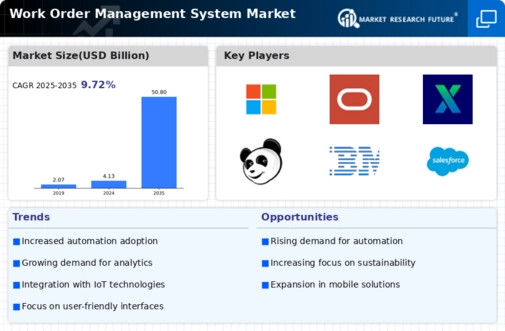The Work Order Management System Market has been evolving significantly, driven by the increasing need for efficient organizational processes and the management of workflow within various industries. With businesses striving to enhance operational efficiency, the competition among providers has grown intensely. Companies are focusing on developing integrated solutions that streamline work order processes, facilitate real-time tracking, and enhance communication between teams and departments. The market is characterized by its diverse range of offerings, including cloud-based systems and software that aid organizations in planning, scheduling, and executing work orders effectively.
These dynamics have propelled advancements in technology, with a strong emphasis on automation and data analytics, contributing to heightened competitive rivalry among market players. Microsoft has established a robust presence in the Work Order Management System Market through its comprehensive suite of enterprise solutions. The company leverages its extensive cloud platform, which allows for seamless integration of work order management with other business processes. One of its key strengths lies in its ability to provide scalable and customizable solutions that cater to businesses of various sizes.
Microsoft’s user-friendly interface and powerful data analytics capabilities enable users to derive valuable insights and make informed decisions. Furthermore, the company's commitment to security and compliance instills confidence in its client base, facilitating a more streamlined approach to managing work orders. This combination of technological prowess and customer focus positions Microsoft as a formidable competitor in this market. Oracle, recognized for its enterprise-grade solutions, plays a significant role in the Work Order Management System Market with its in-depth functionality and capability to cater to complex organizational needs.
The company offers a comprehensive range of cloud-based applications that enhance workflow and asset management. Oracle's work order management systems stand out due to their extensive feature set, including advanced scheduling, resource allocation, and real-time visibility into operational performance. The company's strengths include its deep industry expertise and robust integration capabilities, allowing for seamless orchestration across various business units. Additionally, Oracle’s commitment to continuous innovation, driven by research and development, ensures its solutions align with evolving market demands, further solidifying its competitive edge in the global landscape.

























